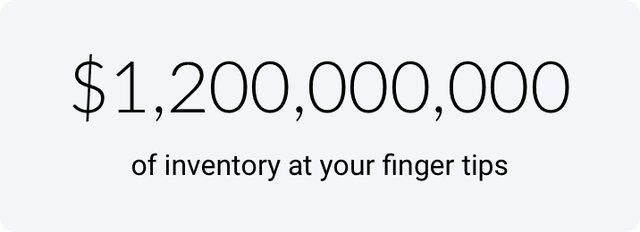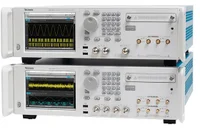| Benefits |
|
| Performance you can Count On | Depend on Tektronix to provide you with performance you can count on.
In addition to industry-leading service and support, this product comes backed by a standard one-year warranty.
|
| Seamless Transition from Simulation to Generation | If a waveform can be defined or captured, then the AWG70000B can generate the signal.
The creation of the waveform can happen in many ways. Waveform creation plug-ins, which are optimized to work specifically with the Tektronix AWG family, provide specific waveform creation capabilities, while 3rd party solutions like MATLAB, Excel, or others, have the flexibility to create any waveform you desire.
Waveforms created in any of these packages can be imported and played back in the AWG70000B, seamlessly transitioning from the simulation world to the real world.
Additionally, any signals captured on Tektronix oscilloscopes or Real-Time Spectrum analyzers can be loaded into the AWG70000B and played back.
With the use of the built in waveform generation plug-ins, the captured signal can also be modified or changed to meet any specific requirements that may exist.
|
| Wideband RF Signal Generation | RF signals are becoming more and more complex, making it more difficult to accurately create the signals required for the testing and characterization of RF systems.
To address these challenges, RF Generic delivers advanced capabilities to synthesize digitally modulated baseband, IF and RF/microwave signals supporting a wide range of modulation schemes.
The RF Generic, Radar, Multitone, OFDM, and Environment plug-in's easy to use graphical user interfaces integrate seamlessly with the AWG70000B Series user interface or the SourceXpress remote PC application.
The latest digital RF technologies often exceed the capabilities of other test instruments because of the need to generate the wide-bandwidth and fast-changing signals that are increasingly seen in many RF applications such as Radar, RF communications, OFDM, and Multi-tone.
When used in conjunction with the specific plugin, the AWG70000B Series supports a wide range of modulation formats and simplifies the task of creating complex RF waveforms.
The AWG70000B Series instruments provide customers with ways to generate fully modulated baseband, intermediate frequency (IF) signals, or directly generated RF waveforms up to 20 GHz.
|
| Radar Signal Creation | Generating advanced radar signals often demands exceptional performance from an AWG in terms of sample rate, dynamic range, and memory.
The Tektronix AWG70000B Series sets a new industry standard for advanced radar signal generation, by delivering wide modulation bandwidths up to 20 GHz.
With a sample rate of up to 50 GS/s, the AWG70000B Series can directly generate RF signals never before possible from an AWG.
In instances where IQ generation is desired, the AWG70000B offers the ability to over sample the signal, thereby improving signal quality with its outstanding SFDR performance.
The AWG70000B and the Radar plug-in are the perfect solution for creating complex radar signals.
Users get the ultimate flexibility in creating custom radar pulse suites.
Modulation types such as LFM, Barker and Polyphase Codes, Step FM, and Nonlinear FM are easily created using the AWG, and the flexibility of the plug-in enables the creation of waveforms requiring customer-defined modulation.
The combination AWG and Radar plug-in solution also has the ability to generate pulse trains with staggered PRI to resolve range and doppler ambiguity, frequency hopping for Electronic Counter-Counter Measures (ECCM), and pulse-to-pulse amplitude variation to simulate Swerling target models including antenna scan patterns, clutter, and multipath effects.
|
| Environment Signal Generation | The mission-critical nature of many radar signals requires that they coexist with standards-based commercial signals sharing the same spectrum without performance degradation.
To meet this expectation, a radar designer has to thoroughly test all the corner cases at the design/debug stage.
The AWG70000B and the Environment plug-in offers extreme flexibility to define and create these worst-case scenarios.
You can specify up to 50 scenarios to define your environment, including WiMAX, WiFi, GSM, CDMA, W-CDMA, DVB-T, Noise, Bluetooth, LTE, OFDM, Radar and more.
This plug-in also allows you to seamlessly import signals from other plug-ins (including Radar, RF Generic etc.), as well as from Matlab® and from Tektronix spectrum analyzers and oscilloscopes, into your environment.
You can also configure PHY parameters of your standard-specific signals.
You can define the carrier frequency, power, start time, and duration for all the signals in your environment, so you have full control over the way these signals interact/interfere with each other.
|
| LXI Class C | Using the LXI Web Interface, you can connect to the AWG70000B Series through a standard web browser by simply entering the AWG's IP address in the address bar of the browser.
The web interface enables viewing of instrument status and configuration, as well as status and modification of network settings.
All web interaction conforms to the LXI Class C specification.
|

















